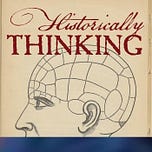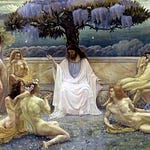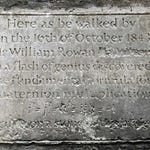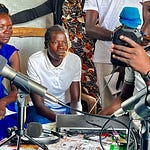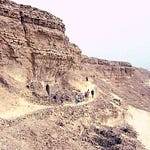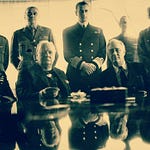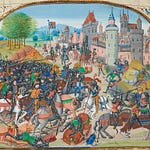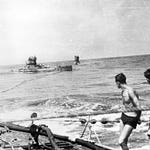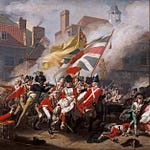Originally published on July 17, 2023 (Episode 325)
Introduction
On a wall outside the reading room of the Museo Correr hangs a world map unlike any other. Painted in 1459, its cerulean oceans are dotted with ships of every nation; its landmasses marked with castles, mosques, cathedrals, arches, and towers. Just as striking are the words—thousands of them—elegantly penned in Venetian dialect.
This is the map of Fra Mauro, a Camaldolese monk in Venice. At once dazzlingly beautiful and intellectually groundbreaking, it was the most advanced description of the known world yet seen in Europe—or perhaps anywhere. Fra Mauro’s map captures a moment when cartography began shifting from cultural and religious symbolism toward something closer to science, a proto-discipline of geography and empirical description.
My guest Meredith F. Small explores this story in her new book Here Begins the Dark Sea: Venice, a Medieval Monk, and the Creation of the Most Accurate Map of the World (Pegasus, 2023). She argues that Fra Mauro’s masterpiece marked a turning point in the history of knowledge, bridging medieval cosmology and modern science.
About the Guest
Meredith F. Small is Professor of Anthropology at Cornell University. She has written widely for both academic and general audiences, including Inventing the World: Venice and the Transformation of Western Civilization.
For Further Investigation
Meredith F. Small, Here Begins the Dark Sea: Venice, a Medieval Monk, and the Creation of the Most Accurate Map of the World (Pegasus, 2023)
Related conversations
Robyn Arianrhod on Thomas Harriot
Biblioteca Nazionale Marciana, home of Fra Mauro’s map
Mapping Our World: From Terra Incognita to Australia— a video on Fra Mauro’s amp with commentary and close-up details from the National Library of Australia
San Michele in Isola, site of Fra Mauro’s monastery. The Camaldolese congregation there was closed in the 20th century, though the order continues elsewhere.
💬 Listen & Discuss
What makes Fra Mauro’s map different from other medieval mappae mundi? How does it reflect Venice’s role as a crossroads of trade, culture, and knowledge? And what does this episode tell us about the shift from symbolic to empirical ways of knowing? Share with a friend who loves Waze, or Venice.

